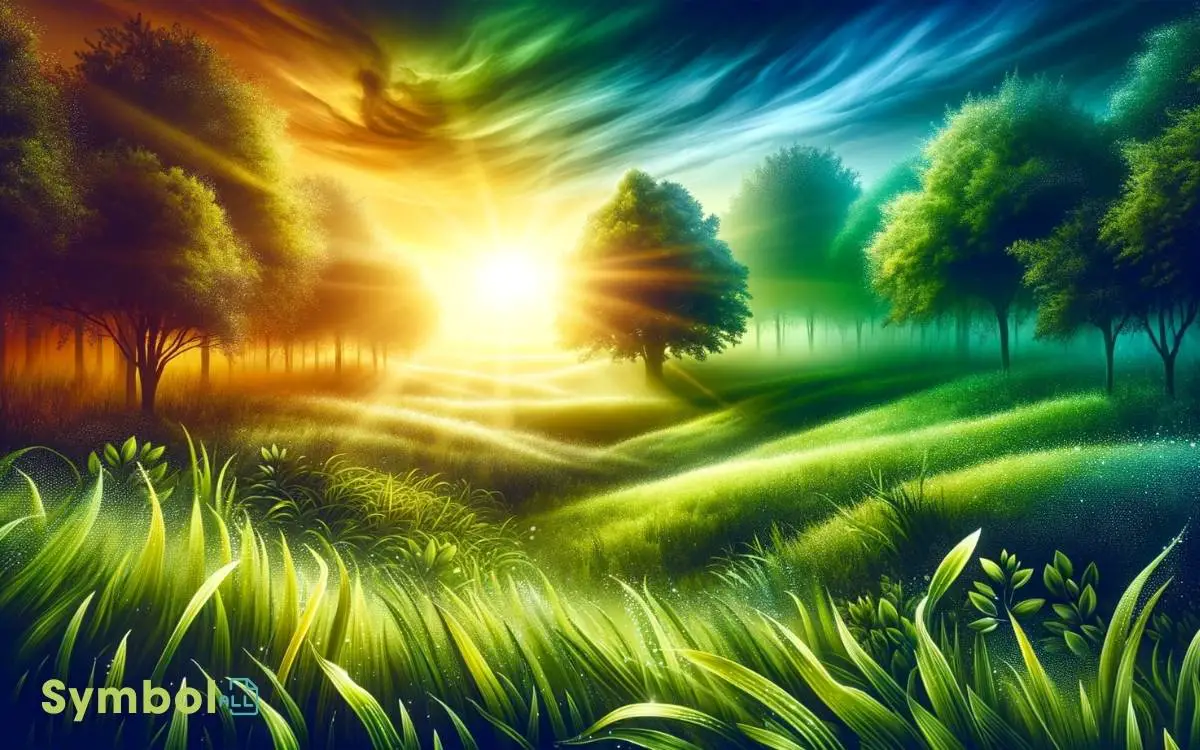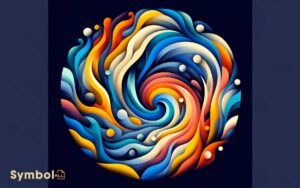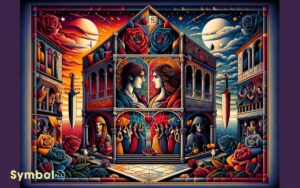What Color Symbolizes New Beginnings? Explored!
Green epitomizes the very essence of new beginnings. This color embodies renewal, growth, and emotional rejuvenation, serving as a universal signal for fresh starts and new chapters in life. Its profound connection to nature’s incessant cycle of life, death, and rebirth offers a deep, symbolic reveal that spans cultures and historical eras.
Ancient civilizations, from the Egyptians to the Celts, revered green for its associations with fertility, growth, and renewal.
This historical and cultural significance, coupled with its psychological impacts on mood and creativity, underscores green’s intrinsic link to the concept of starting anew.

Key Takeaway
Colors of Renewal: What Hues Represent Fresh Starts
| Color | Symbolism of New Beginnings | Cultural Contexts | Common Uses |
|---|---|---|---|
| Green | Growth, renewal, and rebirth | Western cultures, Spring season | Environmental movements, logos |
| Yellow | Happiness, hope, and fresh starts | Eastern and Western cultures | Baby rooms, spring fashion |
| White | Purity, innocence, fresh slates | Weddings, Eastern cultures | Bridal wear, minimalist designs |
| Light Blue | Tranquility, new horizons | Varied global associations | Baby showers, branding |
| Orange | Enthusiasm, welcoming change | Western “autumnal” hues | Marketing, creative arts |
| Silver | Clarity, sleek new beginnings | Modern interpretations | Tech products, luxury goods |
The Significance of Green
Green embodies the essence of renewal and growth, signaling a fresh start or a new chapter in one’s life.
This color, prevalent in nature, represents not only physical vitality but also emotional rejuvenation. It’s no coincidence that green is often associated with spring, a season of rebirth and awakening after the dormancy of winter.
You’ll find that within the psychological domain, green’s presence can greatly influence feelings of serenity and peace, fostering an environment conducive to growth and change.
Its connection to nature underscores a universal cycle of life, death, and rebirth, suggesting that renewal isn’t just a possibility but an inevitable part of the human experience.
Green’s significance transcends mere color, embodying a deep-seated symbolism rooted in the natural world’s inherent capacity for regeneration.
Historical Perspectives
You’ll find that ancient civilizations had unique interpretations of colors, embedding them with meanings that have evolved over millennia.
This journey through the ages reveals how symbolism has undergone significant transformations, reflecting changes in societal values and beliefs.
As we explore these changes, you’ll notice the profound impact of cultural significance shifts on our perception of colors in the context of new beginnings.
Ancient Civilizations Interpretations
Throughout history, ancient civilizations have imbued colors with deep symbolic meanings, reflecting their beliefs, traditions, and insights into the concept of new beginnings.
For instance, the Egyptians associated the color green with fertility and rebirth, seeing it as a symbol of the burgeoning life along the Nile’s banks.
This perspective wasn’t isolated; similar connotations of green signifying growth and renewal were echoed in ancient Chinese and Celtic cultures.
Meanwhile, in Vedic traditions, dawn’s hues soft pinks and light blues were revered as harbingers of new beginnings, embodying hope and the promise of a fresh start.
These interpretations reveal a profound understanding of colors’ intrinsic values, transcending mere aesthetics to encapsulate the essence of life’s perpetual renewal. These interpretations reveal a profound understanding of colors’ intrinsic values, transcending mere aesthetics to encapsulate the essence of life’s perpetual renewal. Through this lens, the color indigo symbolism explained its association with intuition, wisdom, and spiritual depth becomes even more evident. It stands as a bridge between the earthly and the ethereal, inviting introspection and a deeper connection to the mysteries of existence.
Each civilization, with its unique viewpoint, contributed to a rich tapestry of symbolic color associations, underscoring the universal human quest for renewal and transformation.
Symbolism Through Ages
Moving beyond ancient interpretations, the symbolism of colors has evolved over centuries, reflecting shifting cultural norms and values in its journey through history. This evolution highlights how societies’ views on beginnings and renewals have transformed.
Consider these pivotal shifts:
- Medieval Era: Colors were primarily symbolic of social status and religious affiliations, less about personal expression or emotional states.
- Renaissance: There’s a noticeable shift towards using colors to convey individuality and emotional depth, aligning more closely with the concept of personal rebirth.
- Industrial Revolution: This period saw the democratization of colors through mass production, making certain colors more accessible and altering their symbolic meanings.
- Modern Era: Today, the symbolism of colors is incredibly diverse, reflecting a broad spectrum of cultural, political, and personal identities and aspirations.
Cultural Significance Shifts
How have historical shifts in cultural perspectives influenced the symbolic meanings of colors?
You’ll find that as societies evolve, the symbolism attached to colors undergoes a fascinating transformation.
This isn’t merely a matter of fashion or preference changing over time; it’s deeply rooted in how cultures reinterpret their values, beliefs, and experiences in response to historical events and discoveries.
For instance, green, once primarily associated with fertility and nature, has grown to symbolize sustainability and environmental consciousness, reflecting a global shift towards ecological awareness.
Similarly, white’s association with purity and peace has been enriched by its use in movements advocating for social justice and unity.
These shifts illustrate how colors serve as a dynamic canvas, capturing the essence of human progress and the changing tides of cultural significance.
Psychological Impacts
As you investigate the psychological impacts of color, you’ll discover that particular shades can greatly influence emotional rejuvenation, shaping how you feel and perceive the world around you.
The connection between color perception and mood reveals the intricate ways in which visual stimuli modulate your emotional state, often without your conscious awareness.
Moreover, introducing certain colors into your environment can boost creativity, indicating a profound link between the colors we see and our innovative capacities.
Emotional Rejuvenation Through Color
Exploring the realm of emotional rejuvenation, it’s clear that colors wield a profound psychological impact, investigating our moods and perceptions in subtle yet significant ways.
When you dig deeper into how colors facilitate emotional healing and renewal, several key aspects emerge:
- Activation of Memory: Colors can trigger vivid memories, fostering a sense of nostalgia or renewal depending on the emotional context of those memories.
- Stimulation of Emotions: Certain hues can stimulate feelings of calmness or energy, aiding in emotional balance.
- Enhancement of Well-being: Colors that resonate personally can enhance feelings of happiness and well-being, promoting emotional health.
- Facilitation of Release: Engaging with particular colors can help in releasing suppressed emotions, facilitating a process of emotional cleansing and renewal.
These aspects underscore the intricate link between color and emotional rejuvenation, highlighting the depth of their psychological impacts.
Color Perception and Mood
Understanding the psychological impacts of color perception on mood requires an examination of how specific shades influence our emotional landscape.
Colors don’t simply decorate our world; they alter our psychological state, evoking a spectrum of emotional responses that are deeply ingrained in our experiences and cultural conditioning.
For instance, blue, often associated with serenity and stability, can calm your mind, fostering a sense of peace.
Conversely, red, a color linked with energy and passion, might elevate your heart rate, signaling alertness or even agitation.
This nuanced interplay between color and perception underscores the power of hues to shape our mental and emotional well-being.
You’re not just seeing a color; you’re experiencing a psychological phenomenon that can subtly, yet meaningfully, affect your mood and emotional state.
Boosting Creativity With Hues
Diving into the world of color psychology reveals that certain hues can greatly enhance your creative output.
When you’re aware of the psychological impacts colors have, you can strategically use them to boost creativity.
Consider the following:
- Blue: Promotes calmness, facilitating a clear mind for creative thinking.
- Green: Encourages growth and harmony, making it easier to come up with new ideas.
- Yellow: Stimulates optimism, which can help overcome creative blocks and spark innovation.
- Orange: Energizes and invigorates, fostering a playful environment where creativity flourishes.
Incorporating these colors into your workspace or choosing attire that reflects these hues can subtly influence your creative processes.
By understanding and leveraging the psychological effects of colors, you’re equipped to enhance creativity in your personal and professional life.
Cultural Interpretations
Colors carry diverse meanings across cultures, influencing perceptions and emotions tied to new beginnings.
For instance, in Western cultures, white often symbolizes purity and a clean slate, making it a popular choice for weddings and christenings, representing the start of a new life phase.
Conversely, in some Eastern cultures, white is associated with mourning and farewells, a reminder that beginnings often come from endings.
Red, a vibrant and dynamic hue, signifies luck, prosperity, and joy in many Asian cultures, making it a favored color for celebrations and business launches, embodying the hope for a prosperous future.
These cultural interpretations underline how deeply ingrained colors are in our collective consciousness, shaping how we envision and embrace the concept of new beginnings, regardless of our geographical or cultural origins.
Green in Nature
One often finds in nature that green symbolizes growth, renewal, and the vibrant commencement of life’s cycles. This color’s presence in the natural world isn’t crucial; it’s deeply entwined with life’s very essence.
To understand its significance, consider the following:
- Chlorophyll’s Role: The green pigment essential for photosynthesis, symbolizing energy conversion and life sustenance.
- Seasonal Changes: Spring’s greenery heralds new beginnings, echoing nature’s cycle of rebirth.
- Ecological Balance: Green spaces are necessary for biodiversity, indicating health and balance.
- Psychological Effects: Exposure to green in natural settings reduces stress, fostering a sense of well-being and renewal.
These elements collectively underscore green’s emblematic role in symbolizing new beginnings in the tapestry of nature, reflecting both a literal and metaphorical source of life and rejuvenation.
Incorporating Green in Life
Understanding the profound symbolism of green in nature invites us to explore how integrating this color into our daily lives can foster a sense of renewal and growth.
Incorporating green isn’t merely an aesthetic choice; it’s a deliberate step towards embracing the vitality and rejuvenation that the color embodies.
From the verdant plants that oxygenate our spaces to the choice of green hues in our attire and decor, each element subtly shifts our psychological state, encouraging openness to change and the blossoming of new ideas.
Scholars argue that the color’s omnipresence in nature serves as a constant reminder of life’s cyclical nature, hence wearing or surrounding oneself with green can significantly enhance one’s sense of well-being and optimism for the future.
Conclusion
In sum, green embodies the essence of renewal and growth. Historically revered, its psychological effects foster serenity, signaling rebirth across cultures.
Nature itself champions green as the herald of new beginnings, inviting its incorporation into our lives as a perpetual reminder of renewal.
Embracing green, we’re akin to medieval alchemists, transmuting the mundane into extraordinary opportunities for growth.
Analytically, green’s multifaceted significance enriches our understanding, guiding us toward a path of continual rebirth and rejuvenation.






